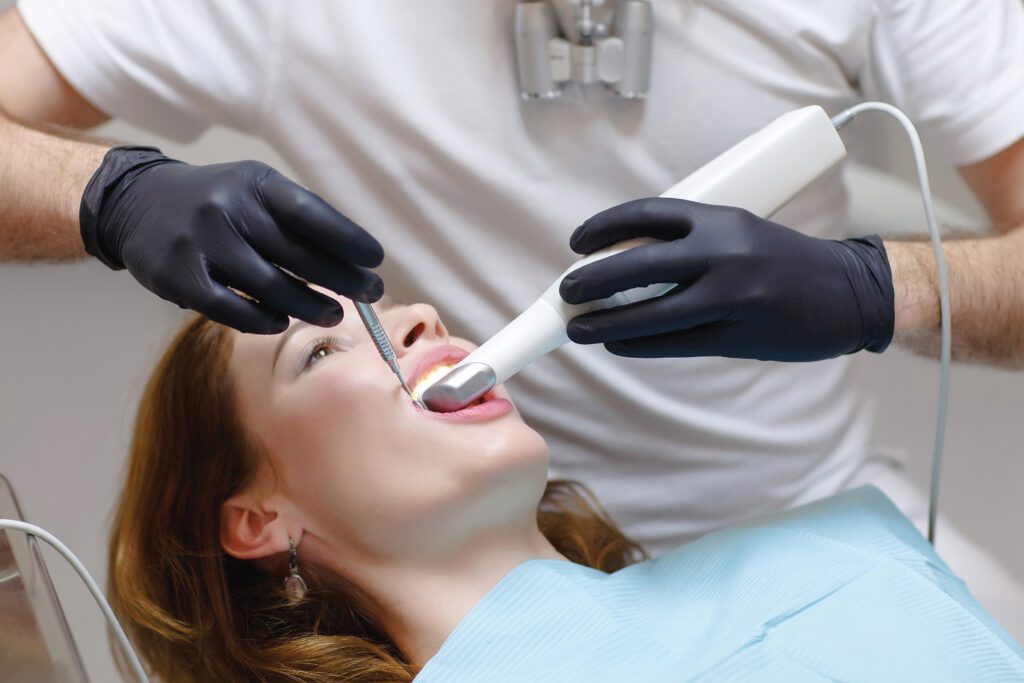3D intraoral scanning technology can quickly and accurately create a digital model of the mouth.
Understanding Dental Impressions
Dental impressions are a replica of the patient’s mouth, which is used to examine its status and create custom restoration pieces, such as dentures, crowns, bridges, and retainers. Traditionally, dental impressions are obtained by creating a physical mold of the patient’s teeth using a putty-like material.
New Solutions

Advancing technology has introduced digital methods of capturing dental impressions, which deliver results with speed and accuracy. Digital impressions require less materials and steps than molds – this increases efficiency and reduces the possibility of error.
What to Expect
When capturing a digital impression, the dentist will move a wand-like tool connected to a computer over the surface of the teeth to create a virtual model of the hard and soft tissues in the mouth. This quick and painless process is completed in only three to five minutes.
Benefits to Patients
Digital impressions offer a more pleasant experience than using a mold, as the putty can cause discomfort to patients with severe gag reflexes or tooth sensitivity. The 3D intraoral scanning technology creates a more detailed and accurate image of the mouth and therefore better-fitting dental restorations. Because digital impressions are sent to the laboratory electronically, these restorations can even be completed the same day as the impression, eliminating the need for a return visit to the office.


